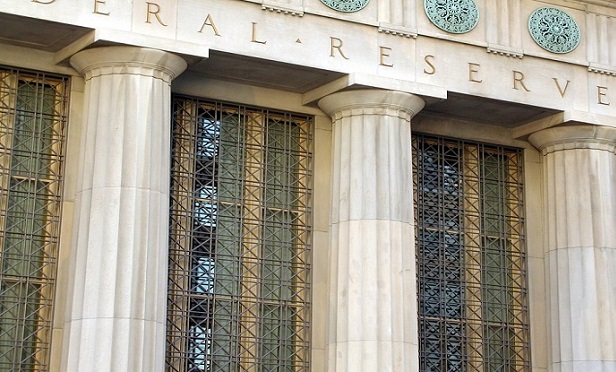 (Photo: iStock)
(Photo: iStock)
While Congress continues to debate a $2 trillion stimulus package to bolster the U.S. economy, the Federal Reserve continues to do the heavy lifting. After reinstituting its quantitative easing program, expanding swaps arrangements for global central banks, cutting short-term interest rates to near zero, and announcing backstops for the commercial paper and money markets, the Fed announced additional programs Monday morning to maintain liquidity in financial markets.
The Fed said there would be no limits on its revived Treasury and mortgage-backed securities purchases, or "quantitative easing," and that it would be purchasing "amounts needed to support smooth market functioning and effective transmission of monetary policy to broader financial conditions and the economy. (Last week it announced $700 billion in Treasury and MBS purchases.)
Also on Monday morning, the Fed established—for the first time—programs to support the corporate bond market: a Primary Market Corporate Credit Facility (PMCCF) for new bond and loan issuance and a Secondary Market Corporate Credit Facility (SMCCF).
In addition, the Fed re-established the Term Asset-Backed Securities Loan Facility (TALF), program used during the financial crisis, to help enable issuance of asset-backed securities backed by student loans, auto loans, credit card loans, and more, and expanded programs it announced just last week supporting money market funds and commercial paper market.
The Money Market Mutual Fund Liquidity Facility (MMLF) will now cover municipal variable rate demand notes (VRDNs) and bank CDs, and the Commercial Paper Funding Facility will allow more issuers to participate since the Fed lowered the minimum pricing for the overnight indexed swap rate.
The Fed also said it would establish a Main Street Business Lending Program to support lending to eligible small and midsize businesses, complementing efforts by the Small Business Administration.
"The Fed has attempted to fill the void created by paralyzed fiscal policy," wrote Jefferies economists Thomas Simons and Ward McCarthy. "These steps are quite significant but still do not address all of the issues that need to be addressed. The political leaders still need to get a game plan going here, or the masses will suffer."
"The Fed is afraid of a liquidity crisis," said economist and money manager Gary Shilling. "But unless it buys all corporate bonds or munis in sight, I don't think it will make a lot of difference."
David Kelly, chief global strategist at J.P. Morgan Asset Management, said, "The Fed is being very aggressive in responding to liquidity issues caused by the sudden economic downturn. However, the real need is for grants rather than loans and so the really important policy moves in helping the economy weather this storm will need to come from Congress rather than the Fed."
On Capitol Hill, in mid-afternoon, Democrats and Republicans were still in a standoff on a roughly $2 trillion stimulus package to address the fiscal situation. The biggest sticking point: the rules governing approximately $500 billion in loans to businesses. Democrats want to ensure that those funds are not used for stock buybacks or executive bonuses. Republicans are opposing those changes.
Two procedural votes to proceed on the current bill failed. Complicating the vote is the absence of five Republican senators who have contracted Covid-19 or are self-quarantining because they have been exposed to the virus.
While that standoff continues, House Speaker Nancy Pelosi said House Democrats will introduce their own version of a stimulus package as an alternative. It's expected to include additional unemployment benefits for workers and restrictions on the funds that companies receive, banning stock buybacks, increased executive pay, and firing of workers.
From: ThinkAdvisor
© 2025 ALM Global, LLC, All Rights Reserved. Request academic re-use from www.copyright.com. All other uses, submit a request to [email protected]. For more information visit Asset & Logo Licensing.





